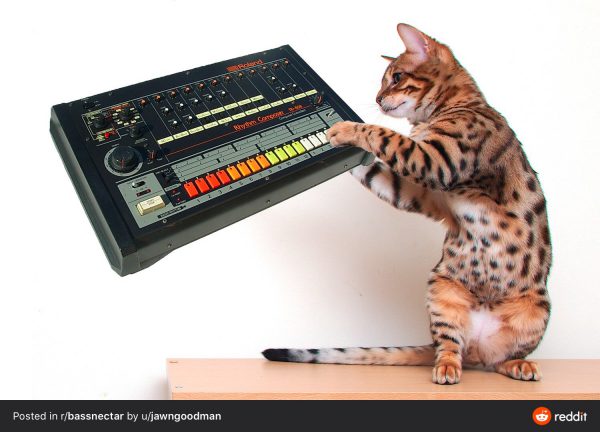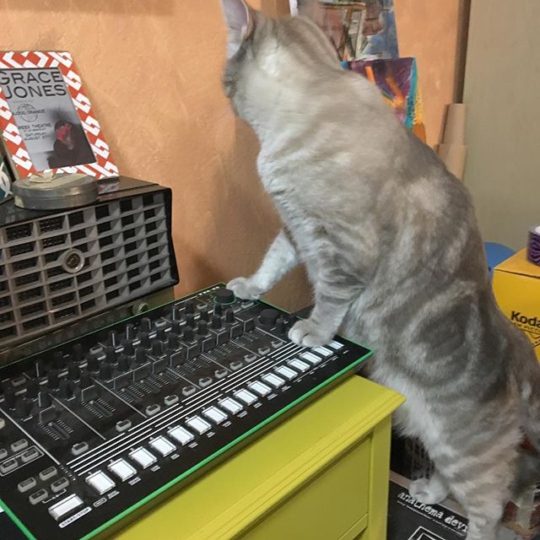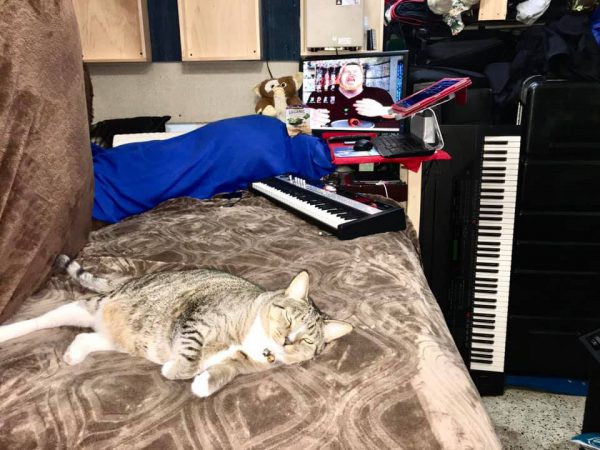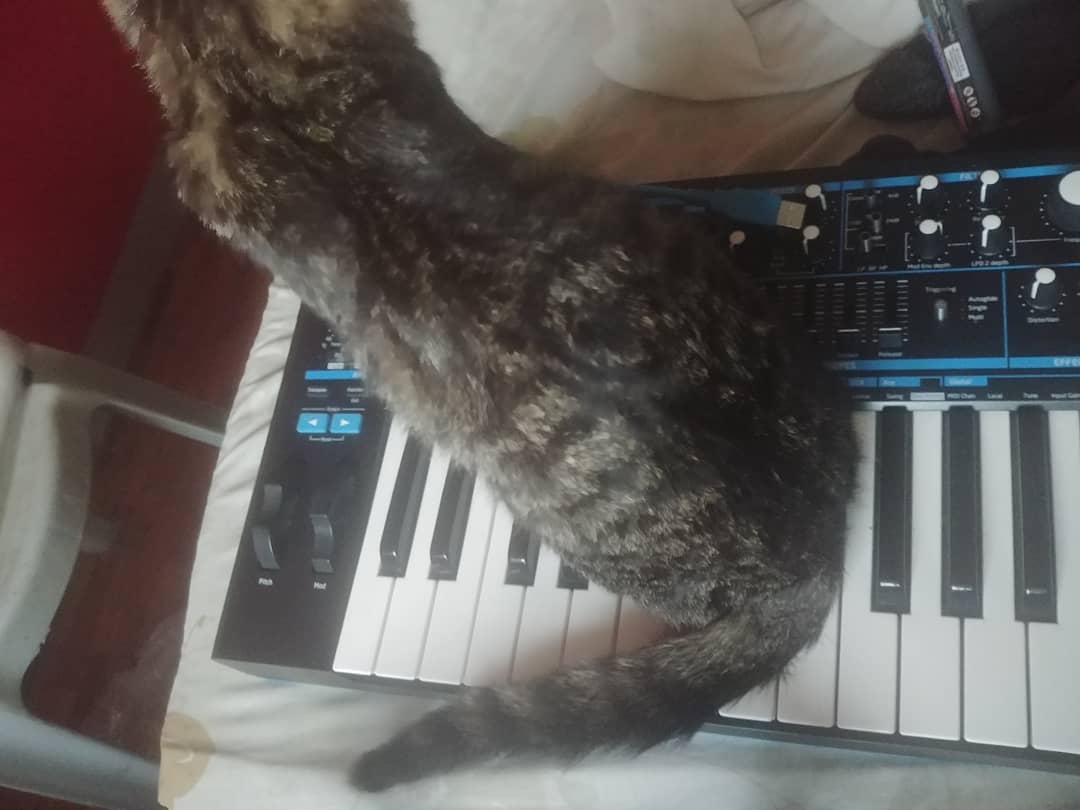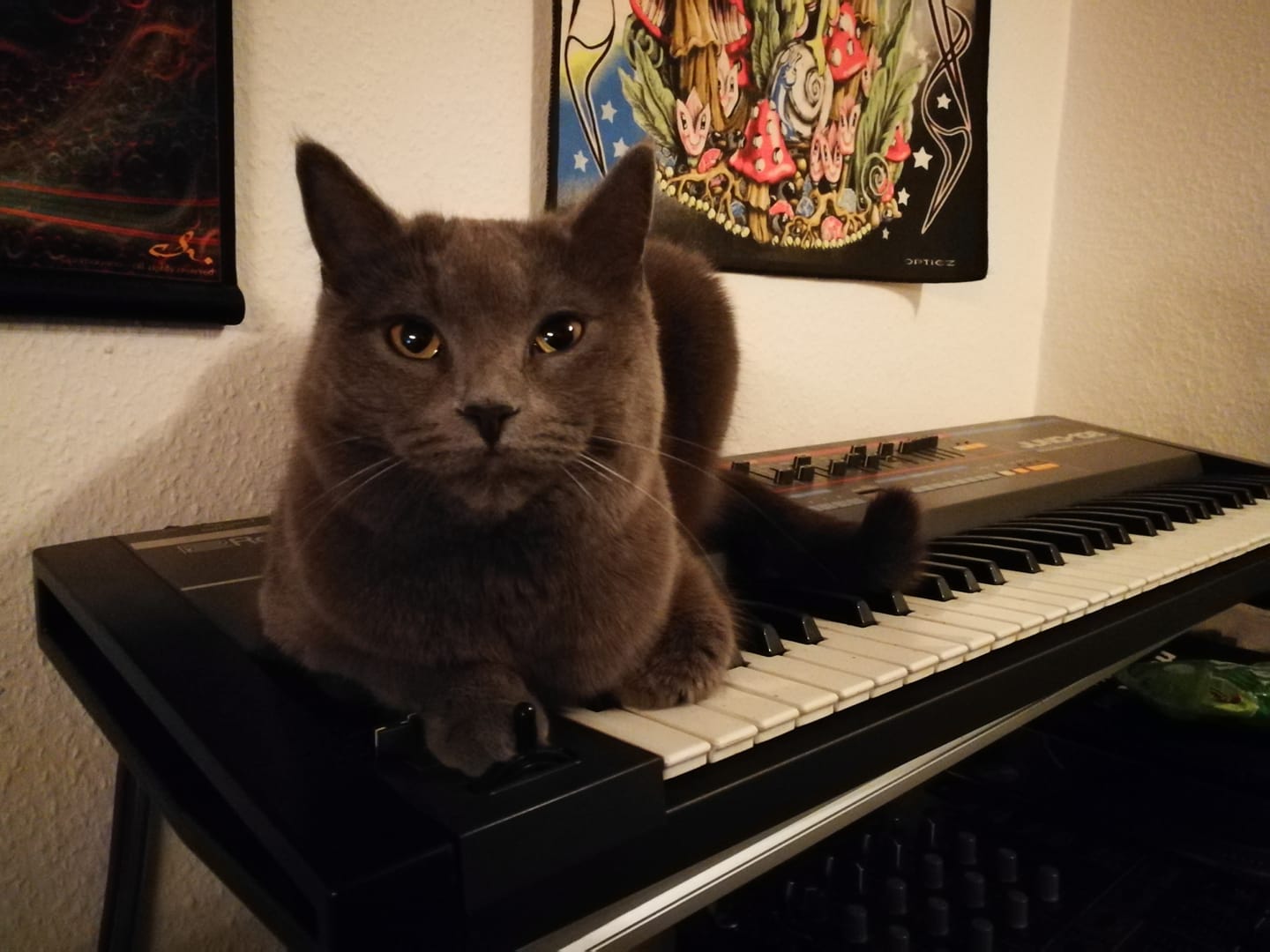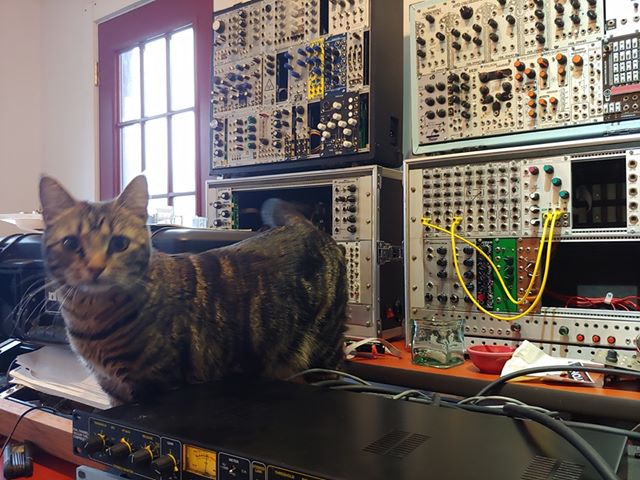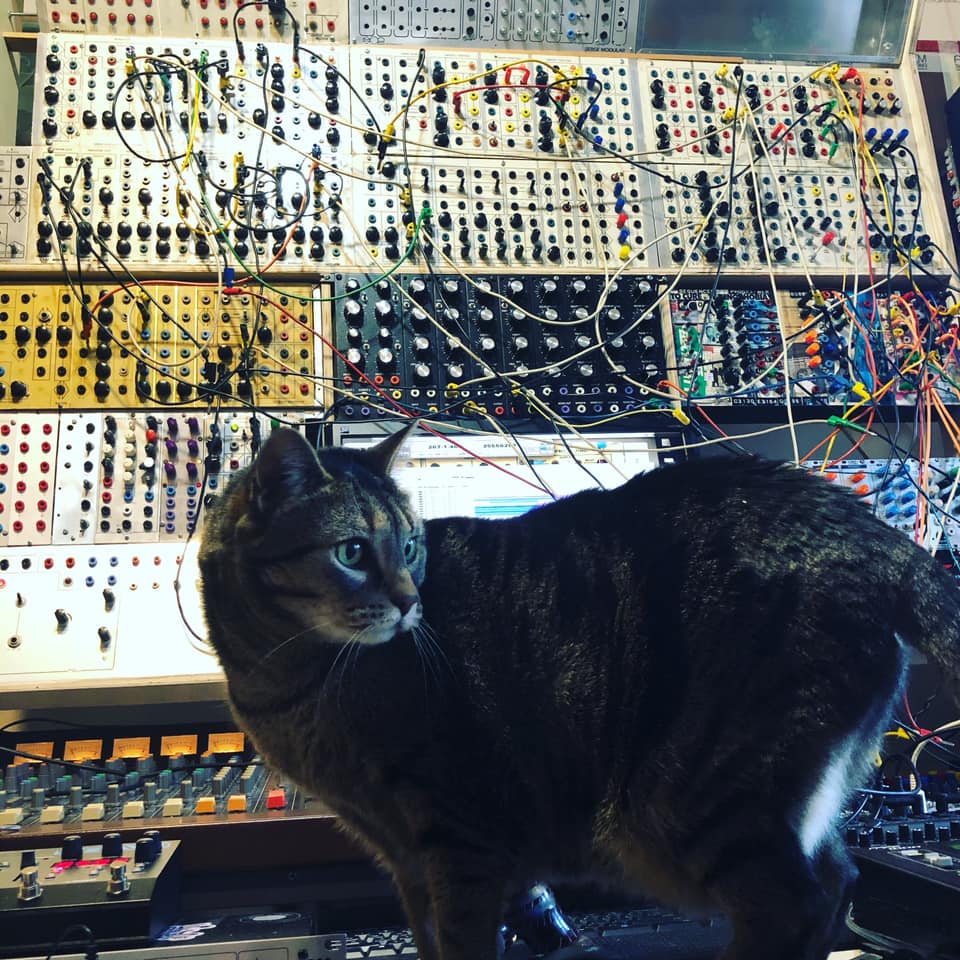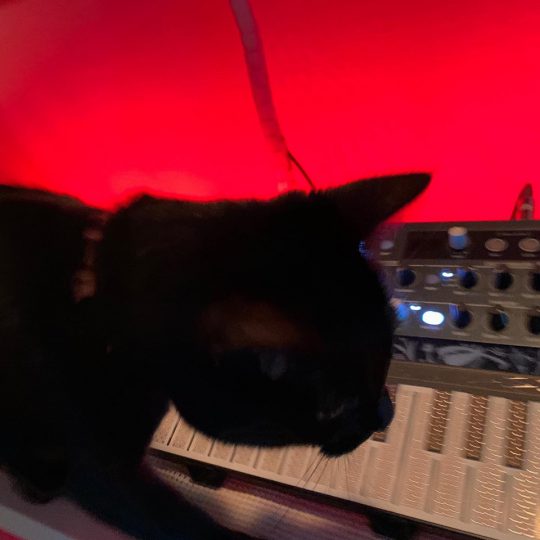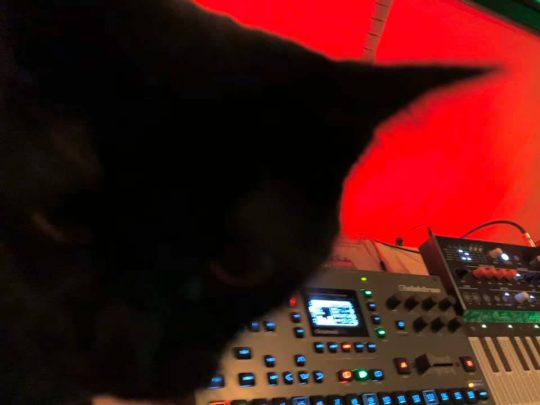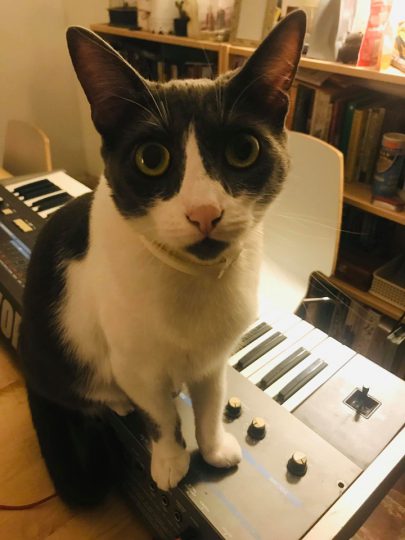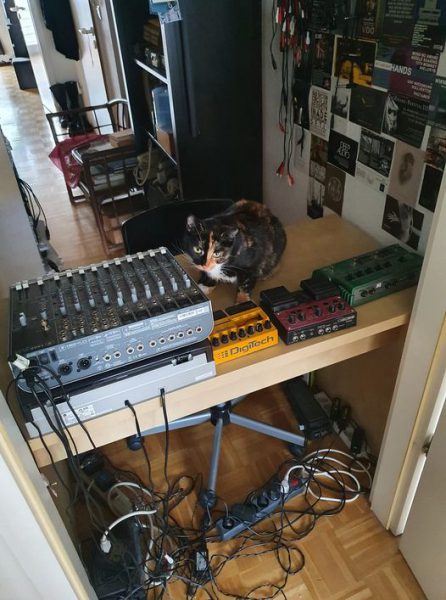
Sasa gets ready to perform a noise set with pedals from Digitech, Boss and Line 6. From Mark Wilson via Facebook.
Of the three pedals, I am most familiar with the Line 6 DL 4 delay pedal. It was my go-to for many years for delay and loops, even acting as an extra oscillator when the feedback was turned up. One memorable show with the DL 4 was performing Polly Moller Springhorn’s piece Flip Quartet at Book Zoo in Oakland, one of a few times I played it.

